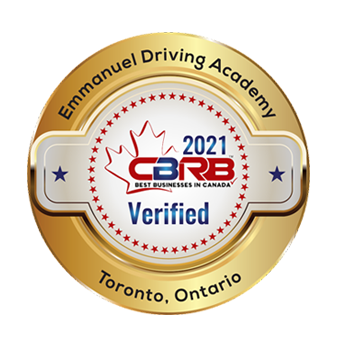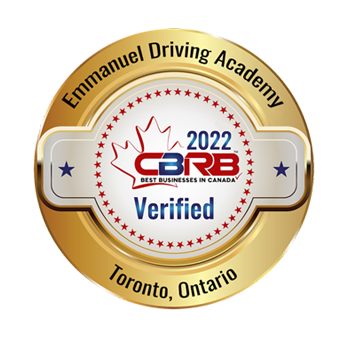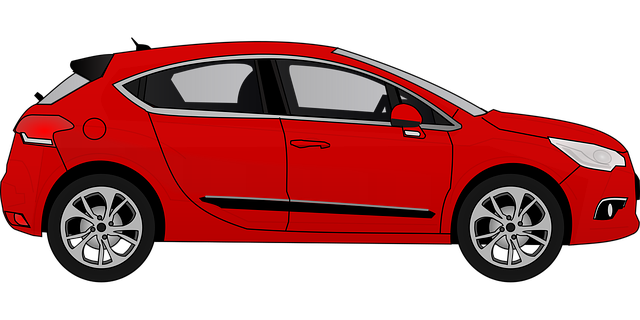In Ontario, you must be at least 16 years of age to get a license. Graduated licensing was introduced in Ontario in April 1994. In order to get your license you need to go through three stages.
Obtain and study a Driver’s handbook and once you are eligible (16 years age or above), you can go to a Ministry of Transportation office nearest you and write a theoretical G1 exam. You must bring $125.00 and 2 pieces of ID with you. Once you pass the exam, you will be given a G1 license and you will be eligible to do a practical road test one year from that date.
Under a G1 license, many conditions apply which are designed to help you gain experience before you can actually do your road test.
Once your get G1 permit, then very next step is to attend an approved driving course such as ours, you are eligible to reduce the waiting period for your first road test from 12 months to 8 months. At the end of this waiting period you can go for your first road test.
After waiting period of 8 or 12 months, you will go for first road test and if you pass this you will have G2 license at end of test. Some conditions apply which are designed to maintain your safety.
The following is a brief summary of the various topics covered by all of our Full Defensive Driver Training Courses (classroom theory portion).
This section covers many common misconceptions regarding everyday traffic situations and driving in general. After completing this introductory section, students should know all pertinent information regarding acquiring a learner’s licensce, as well as the basic framework for the Smith System of Defensive Driving.
An explanation of shapes and colors of road signs along with a discussion of each particular sign and a short video presentation to familiarize students with the different sign catagories. Also discussed are the consequences of failing to obey specific road signs.
A discussion about seat-belts, child seats, airbags and other safety features which, when used consistently save lives.
The Smith System is the industry standard in defensive driver training systems. It consists of the “Five Keys to Space Cushion Driving.” This program covers improving driver perception to create safer drivers, keeping space around your vehicle (no more ‘traffic roulette’,) what good driving practices are, creating good seeing habits and improving driver visibility.
Hazard Recognition, Perception and Management: Students learn to identify hazards and discuss ways to manage them so that they are no longer hazards to them on the road.
Discussed are merging and merge lanes, rights of way, uncontrolled intersections, pedestrian hazards, buses, parking, signalling, traffic congestion, traffic tempo, one-way streets and traffic patterns. Additionally, many other dangers of city driving are investigated and discussed by the students.
Driving with Fuel Efficiency: In the interests of environmental awareness, a discussion regarding methods of driving economically and areas in which students can improve their efficiency as it relates to their tires, brakes, fuel and wearable moving parts.
The effects of drinking and drugs on a driver’s abilities, reaction times and decision-making abilities and the responsibilities of drivers as road-users. Included is a frank, open discussion and videos about these serious topics. Also discovered are the ways that things like stress, anger and fatigue can impair driving ability.
Lecture and Discussion on collision avoidance techniques and the skills necessary to avoid putting yourself into a position where you are in danger of a collision. Students learn to be Pro-active in their driving and to practice the See-Think- Do methods which keep them out of trouble in the first place.
Students discover how their attitudes towards driving develop through outside influences such as peer pressure, advertising, etc and discuss ways to have a better driving attitude.
Weather, road conditions, night driving and other situations are discussed and students learn ways to drive more safely and effectively in them. We also discuss ways to deal with emergency situations as they occur during driving.
Methods for safe entry and exit onto freeways and highways are discussed. The use of HOV lanes are covered in this segment.
Being prepared and feeling confident for the government road-test. We cover all of the requirements to being successful the first time.
This is only a brief overview of a few of the life-saving concepts that we teach in our Defensive Driver Training programs.
1.1 Traffic laws and Regulations
1.2 Reason for Traffic laws and regulations
1.3 Levels of traffic laws
1.4 Road Control Devices
2.1 Basic vehicle components
2.2 Vehicle Safety
3.1 Controlling the Vehicle safely
3.2 Traction
3.3 Friction
3.4 Collision Avoidance
3.5 Skid Control
4.1 Adjusting driver behavior
4.2 Emotions effecting driving
4.3 Positive driving attitude and behaviors
5.1 Responding to emergency situations
5.2 Safety and Responsibility
5.3 Conflict avoidance
5.4 Environmental Responsibility
5.5 Lifelong learning
6.1 Cooperative driving
6.2 Communication among road users
7.1 Impaired driving
7.2 Effects of impairment
7.3 Consequences of impairment
7.4 Distraction
8.1 Where to observe
8.2 How to observe
8.3 Scanning
8.4 Perception of personal limits
8.5 Dangerous driving
8.6 Risk tolerance
8.7 Accurate risk perception
8.8 Factors effecting perception
8.9 Factors of collision
8.10 Driving Hazards
In Car Course Outline
We ensure that our students get the best in quality during their on the road training session. To ensure their safety on the road we offer an emergency maneuver package to go along with the basic 10 hours that is offered with the standard course. We are the only school besides young drivers of Canada that offer this option to their students. the package will involve 2 full hours of instruction that will cover the following maneuvers:
Student must learn to recover and control vehicle if it drifts onto a gravel shoulder.
Same as above, yet in this maneuver the students are taught how to avoid car passing from opposite lane in to their lane. This will allow the student to prevent and avoid a head on collision
Student is taught how to respond correctly to a car that is about to hit them from behind. Emphasis is placed on hand over hand steering and also on being aware of their blind spots.
Student is taught to respond correctly to an object that has just fallen into their path at 40km/h. Emphasis is placed on proper steering and eyes ahead, always looking into their space on the road and where they want to go.
The object of the procedure is to have the student stop as soon as possible using the best braking procedure without the brakes locking up. Avoiding locking of the brakes will prevent the car from sliding and also will stop the car more quickly and efficiently.
With this maneuver student are still using the threshold braking technique, But you are now approaching the object pylons as at faster speed (60 km/h) and will not able to stop in time , therefore to avoid hitting object you must pick and escape route of the time (Left or Right ) and swerve.
Trained professional teAch all of our session. Most of the lesson will be given in a parking lot using pylons as obstacles in driver way yet, gravel shoulder recovery will be though the road ONLY when it safe to do so . The cost of the package is $200 + HST and it will cover all the basic maneuvers mentioned above.
We stress that every student consider putting extra in the extra time and money to learn these procedures because it could help them become a more safe and cautious driver. All fees for this package should be paid in advance in order to help us serve you better. Please fill the bottom portion with your name and signature; student under 18 should also have their parent / guardian sign below.








